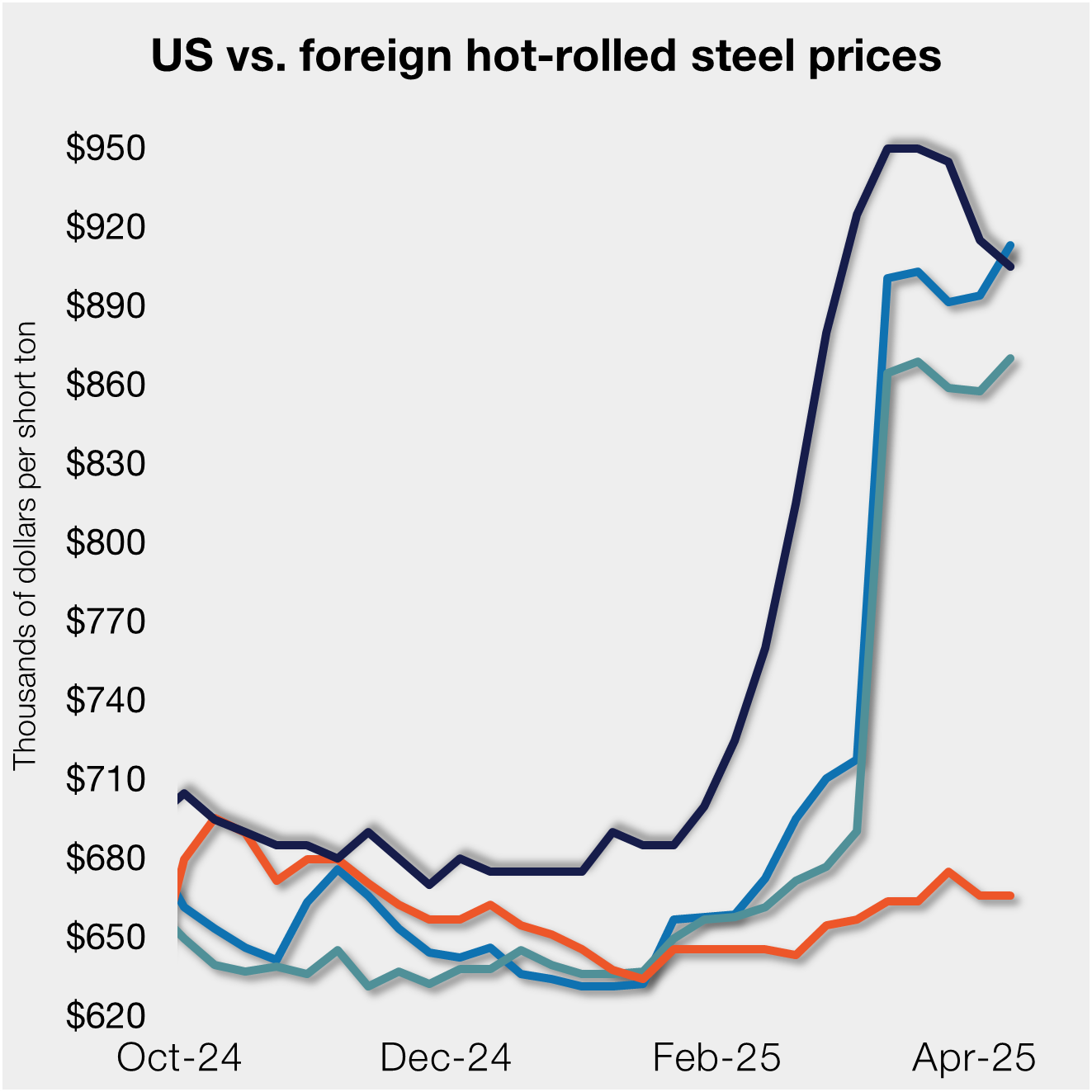Steel Products
Chicago Fed National Activity Index as Leading Indicator to Steel Supply
Written by John Packard
February 27, 2013
Written by: Peter Wright
Chicago Fed national Activity Index, (CFNAI) is a widely respected measure of both overall and detailed economic activity in the US. The index’s three-month moving average, increased to +0.30 in January from +0.23 in December. Given the substantial upward revisions for November and December, January’s result marked the third consecutive reading above zero, (Figure 1 below). Additionally, January’s reading suggests that growth in national economic activity was somewhat above its historical trend. The economic growth reflected in this level of the CFNAI suggests limited inflationary pressure from economic activity over the coming year.

The CFNAI is a weighted average of 85 monthly indicators of national economic activity. It is constructed to have an average value of zero and a standard deviation of one. Since economic activity tends toward trend growth rate over time, a positive index reading corresponds to growth above trend and a negative index reading corresponds to growth below trend.
The 85 economic indicators that are included in the CFNAI are drawn from four broad categories of data: production and income; employment, unemployment, and hours; personal consumption and housing; and sales, orders, and inventories. Each of these data series measures some aspect of overall macroeconomic activity. The derived index provides a single, summary measure of a factor common to these national economic data. On a three month moving average basis, production and income have increased strongly since September, personal consumption and housing has been improving steadily since mid 2011 (Figure 2 Below).

The CFNAI is a useful leading indicator of the apparent supply of all steel products with a lead of about six months, (Figure 3 below). The suggestion at present is that steel supply is below true market demand. It is well established that the volatility of steel supply is much greater than that of GDP. This is probably due to inventory control at all levels of the supply chain. Based on the first estimate of GDP in Q4 2012, economic activity shrank by 0.1 percent which by historical precedent would have led to a reduction of inventories nationwide. The second estimate of Q4 GDP growth will be released on Thursday this week. Based on revisions made to the growth of GDP in Q3 there may be a positive revision to the Q4 estimate. Stay tuned!


John Packard
Read more from John PackardLatest in Steel Products

CRU tariff webinar replay now available
CRU’s latest webinar replay on how Trump’s tariffs affect the global steel market is now available on our website to all members. After logging in at steelmarketupdate.com, visit the community tab and look under the “previous webinars” section of the dropdown menu. You’ll find not only this special CRU webinar but also all past Community […]

US, offshore CRC prices diverge
US cold-rolled (CR) coil prices declined this week, slipping for the first time since early February. Most offshore markets deviated, moving higher this week.

Construction growth slowed in March on tariff woes: Dodge
The decline comes after reaching a record high in January to kickstart the year.

Return of S232 zapped gap between US and EU HR prices, Asian HR remains cheaper
Domestic hot-rolled (HR) coil prices declined this week for a third straight week. Most offshore markets bucked the trend and gained ground. Uncertainty in the US market around tariffs, especially after “Liberation Day,” caused US prices to slip as buyers moved to the sidelines. It’s unclear to date whether the 90-day pause on the more […]

SMU Steel Demand Index momentum slows further
SMU’s Steel Demand Index growth eased again, according to early April indicators. The slowdown comes after the index reached a four-year high in late February.
